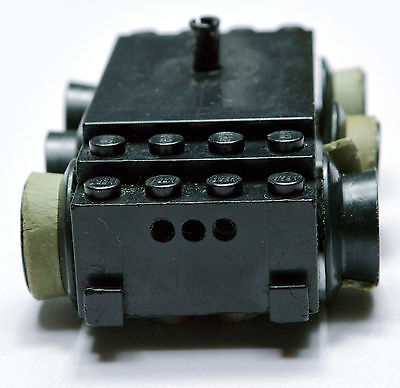This question is somewhat related to a similar question I asked about whether pushing a 12V train motor (such as the one below) would damage it.
See title "Set 7865: six wheeled Lego® train motor (12V, 1980 - 1990)" on this page for the specific motor I'm referring to.
Irrespective of whether damage occurs to the motor when being pushed, I'd like to know why, given it contains a DC electric motor, when the gears are pushed by hand, electricity isn't generated by the motor in order to provide current to any connected load (e.g. the lights on the train).
I've noticed that the connected headlights in the train don't illuminate when pushed by hand -- is there some sort of electronic protection to prevent it being used as a generator?


